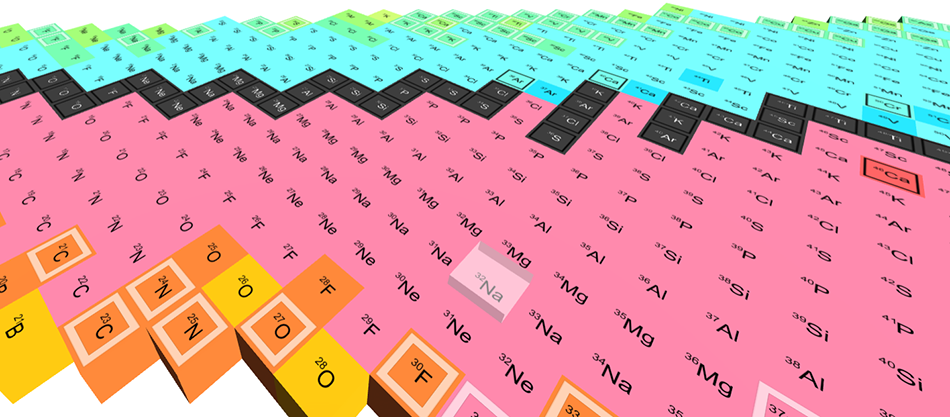Shape-Shifting Nuclei
August 22, 2023
What determines the shape of a nucleus? UT's physicists played a key role in recently-reported findings that shed new light on that mystery. Their dedicated work to develop and deploy a sophisticated yet nimble detection system was central to an Oak Ridge National Laboratory-led study of how nuclear shapes evolve. The unexpected results could point to a deeper understanding of how nuclei stay together and how elements form.
Nuclei typically appear as spherical or deformed (football-like). Some can shift their shape depending on their energy level— deformed at higher energy (excited state) and spherical at low energy (ground state). The reverse (deformed at low energy; spherical at high energy) has been harder to pin down, especially in regions of the nuclear landscape where little experimental data is available.
In this work, scientists found that a sodium-32 nucleus has an exceptionally long-lived excited state, also known as an isomer. This nucleus sits at the heart of the "island of inversion," where previous experiments have documented spherical-to-deformed shape reversal. Isomers can help probe nuclear structure, and the one observed in sodium-32 is a rare microsecond isomer in this particular area of the nuclide chart. It can provide a window into the underlying conditions where the spherical-to-deformed transition begins.

A snapshot of the Chart of the Nuclides with sodium-32 highlighted (Credit: Ed Simpson, Australian National University Research School of Physics.)
The analysis is based on data collected from the very first experiment at the Facility for Rare Isotope Beams (FRIB)—specifically the FRIB Decay Station Initiator (FDSi). This is Professor Robert Grzywacz's home office, so to speak, as he and his group have invested years in this sensitive, modular detector system, starting with the plans on paper and now actually "catching" the fragments of a rare isotopes created by FRIB's powerful linear accelerator and measuring their decay.
"We poured an enormous amount of work into this experiment," he said. "It had to succeed."
While the observation of the sodium-32 isomer is new, the premise is not. As a graduate student Grzywacz was a lead author on papers outlining a novel method suited to scanning large swaths of the nuclear chart in search of new isomers. His work eventually led him to Tennessee, where in 1998 he became a postdoctoral fellow at UT and in 2003 joined the faculty.
Since then he's built a talented nuclear physics team of fellow faculty, students, and staff. These latest findings are outlined in Physical Review Letters and UT Physics co-authors include Grzywacz as well as Miguel Madurga (assistant professor); Zhengyu Xu and Kevin Siegl (postdoctoral research associates), Noritaka Kitamura (postdoctoral research associate, now assistant professor at University of Tokyo); Joseph Heideman, Shree Neupane, and Maninder Singh (PhD alumni); Ian Cox and James Christie (graduate students); Harrison Huegen and Amanda Nowicki (undergraduates); and Jason Chan (Electronics Shop Supervisor).
Learn more about the results at Oak Ridge National Laboratory's website.
With thanks to Dawn Levy of Oak Ridge National Laboratory.